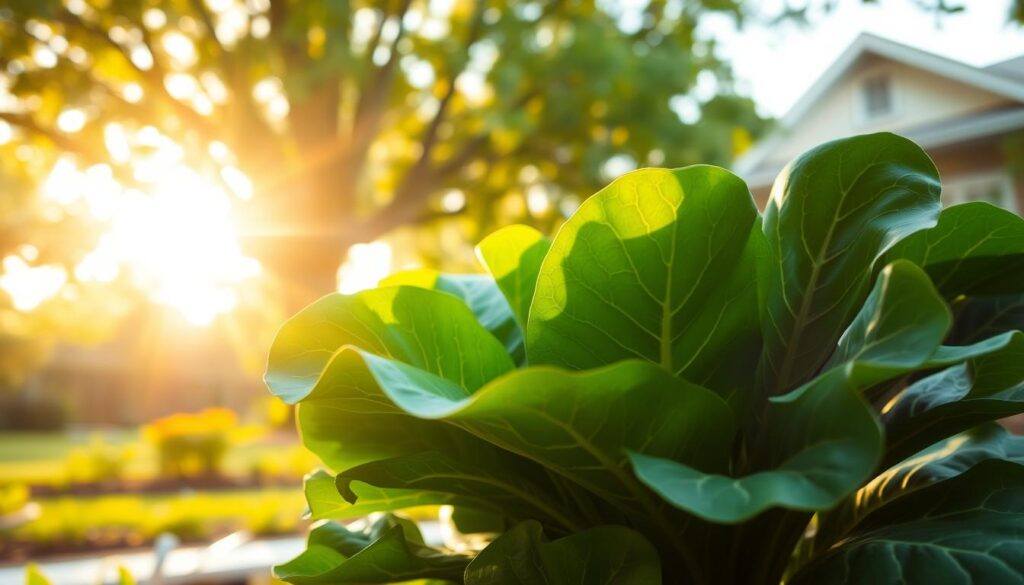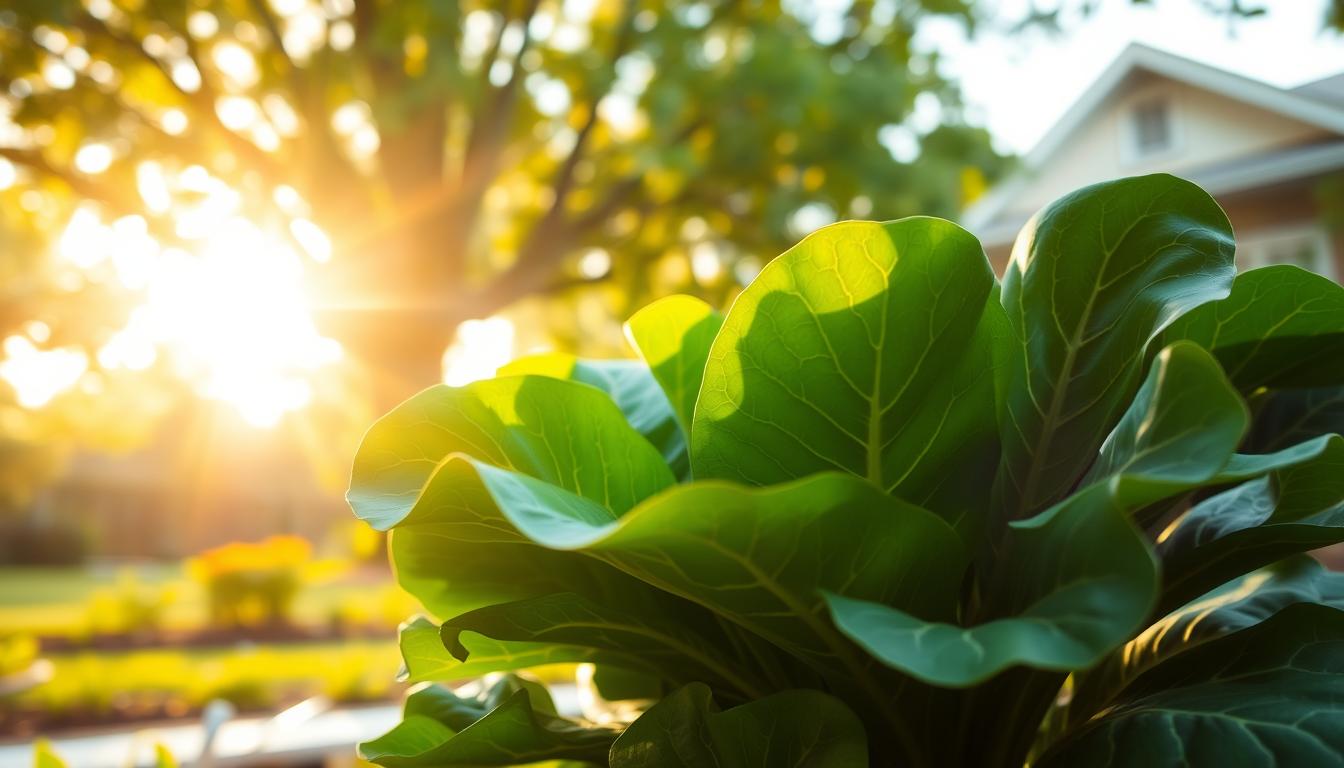Some of the links in this post are affiliate links, which means I may earn a small commission if you make a purchase through those links. This comes at no extra cost to you. Thank you for your support!
Collard greens are a nutrient-rich leafy vegetable that grows best in cooler temperatures of fall. They belong to the Brassica family, which also includes cabbage, mustard, and broccoli. To successfully grow collard greens, you need fertile, well-draining soil and full sun. They are rich in vitamins A, C, K, and minerals like calcium and iron, making them a great addition to a healthy diet.
This guide will teach you how to pick the right variety, prepare your soil, and care for your collard greens plants. Whether you’re an experienced gardener or just starting, you’ll enjoy a bountiful harvest of delicious and nutritious greens.
Key Takeaways
- Choose a collard green variety suitable for your climate.
- Prepare your soil with organic matter for better drainage and fertility.
- Ensure your plants receive full sun and adequate water.
- Learn how to care for your collard greens to maximize yield.
- Harvest your collard greens at the right time for optimal flavor and nutrition.
The Benefits of Growing Your Own Collard Greens
Growing collard greens in your garden has many advantages. It’s not just about the taste and health benefits. It also helps you save money. Plus, you can enjoy a steady supply of greens all fall and winter.
Nutritional Value of Homegrown Collard Greens
Collard greens are full of vitamins A, C, and K, and minerals like calcium and iron. These nutrients are key for strong bones, good eyesight, and a strong immune system. Since you grow them yourself, you get the freshest greens possible.
Popular Collard Green Varieties for Home Gardens
For home gardens, ‘Georgia Southern’ and ‘Top Bunch’ are top picks. They’re loved for their taste, texture, and how easy they are to grow. ‘Georgia Southern’ has big, tender leaves. ‘Top Bunch’ is known for its compact size and high yield.
Cost Savings of Growing vs. Buying
Growing your own collard greens can save you a lot of money. It cuts down your grocery bills and lets you enjoy fresh greens without the extra cost. Here are some ways you can save:
- Reduced grocery bills
- Fresh produce without the markup
- Continuous harvest throughout the season
In summary, growing your own collard greens is a smart choice. It boosts your nutrition and saves you money. It’s a great addition to any garden.
Planning Your Collard Green Garden
Planning your collard green garden is important for their growth. You need to pick the right time to plant and choose the best companion plants. Also, crop rotation helps keep the soil fertile.
Best Seasons to Plant in Different US Regions
In the US, the best planting time for collard greens changes by region. They grow best in cooler weather, making fall the best season. In warmer areas, like the South, winter is good. In cooler places, like the Northeast, spring or early fall works best.
Companion Plants That Support Collard Greens
Onions and garlic help keep pests away from your collard greens. Marigolds keep nematodes at bay. Herbs like dill and cilantro attract good bugs.
Crop Rotation Strategies for Healthy Soil
Crop rotation keeps the soil healthy and fertile. Plant collard greens in a different spot each season. Follow them with legumes or grains to add nutrients back into the soil.
| Crop | Season | Benefit |
| Legumes | Spring | Nitrogen fixation |
| Grains | Summer | Soil structure improvement |
| Collard Greens | Fall | Nutrient utilization |
Selecting the Ideal Growing Location
The success of your collard green crop starts with selecting the ideal growing location. You need to think about several key factors. These factors directly impact your plants’ health and productivity.
Sunlight Requirements for Optimal Growth
Collard greens need full sun to partial shade to grow well. They should get at least 4-6 hours of direct sunlight each day. Getting the right sunlight is key for their growth.

Space Considerations and Plant Spacing
Collard green plants need enough space to grow healthily. They should have about 18-24 inches between each plant. This space allows for air circulation and growth. It also reduces disease risk.
Protection from Extreme Weather Conditions
Collard greens are sensitive to frost and heat stress. To protect them, use row covers or other measures during harsh weather. This keeps your collard greens thriving all season.
Gathering Essential Tools and Materials
Before you start planting collard greens, it’s crucial to have the necessary tools and materials. This will ensure that you’re well-prepared for a successful harvest.
Must-Have Gardening Tools for Success
To grow collard greens, you’ll need some basic gardening tools. These include a trowel for planting, a watering can or hose for irrigation, and gloves to protect your hands while gardening.
Soil Amendments Specific to Collard Greens
Collard greens benefit from fertile, well-draining soil. To achieve this, you can use compost or well-rotted manure to improve soil fertility. Additionally, a balanced fertilizer can provide essential nutrients for healthy plant growth.
Organic Pest Control Supplies
To manage pests organically, you can use neem oil or insecticidal soap. These products are effective against common pests like aphids and cabbage worms. You can also use row covers to prevent pests from reaching your plants.
| Tool/Material | Purpose |
| Trowel | Planting collard greens |
| Compost | Improving soil fertility |
| Neem oil | Controlling pests organically |
Preparing Your Soil for Collard Greens
To give your collard greens the best start, focus on preparing the soil properly. This involves several key steps that will help create an ideal growing environment.
Testing and Adjusting Soil pH
Collard greens prefer a slightly acidic to neutral soil pH, ranging from 6.0 to 7.5. Testing your soil pH is crucial to determine if it needs adjustment. You can use a soil testing kit or send a sample to a lab for analysis. Based on the results, you can adjust the pH by adding lime to raise it or sulfur to lower it.
Adding Compost and Organic Matter
Adding compost and organic matter improves soil fertility and structure. Compost provides essential nutrients that promote healthy plant growth. Mix in 2-4 inches of compost into the soil before planting. You can also add other organic matter like well-rotted manure or leaf mold.
Building Raised Beds vs. In-Ground Planting
You can grow collard greens in either raised beds or directly in the ground. Raised beds offer better drainage and warmer soil temperatures, which can lead to earlier planting and improved growth. However, in-ground planting is also effective if your soil is well-prepared.
How to Grow Collard Greens from Seeds
You can grow collard greens from seeds with a few simple steps. These steps help seeds germinate and grow well. You can start them indoors or directly in your garden. Knowing the process is crucial for a good harvest.
Indoor Seed Starting Techniques
Start collard greens indoors 6-8 weeks before the last frost. Use seed trays or small pots with quality seed starting mix. Plant seeds ¼ inch deep and keep the soil moist.

